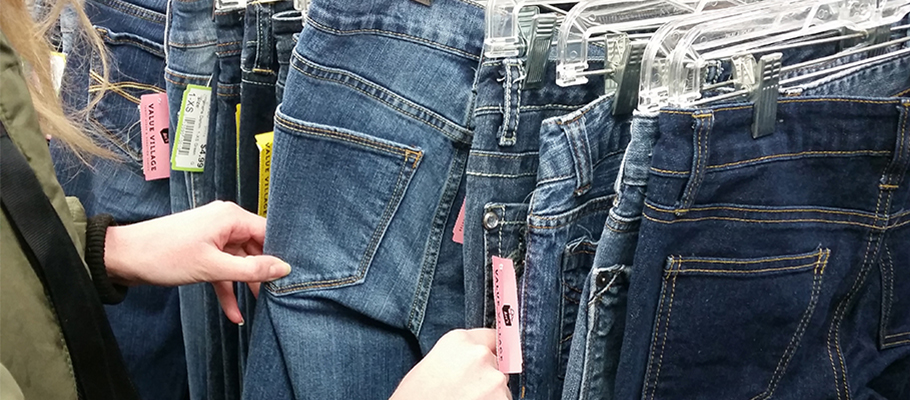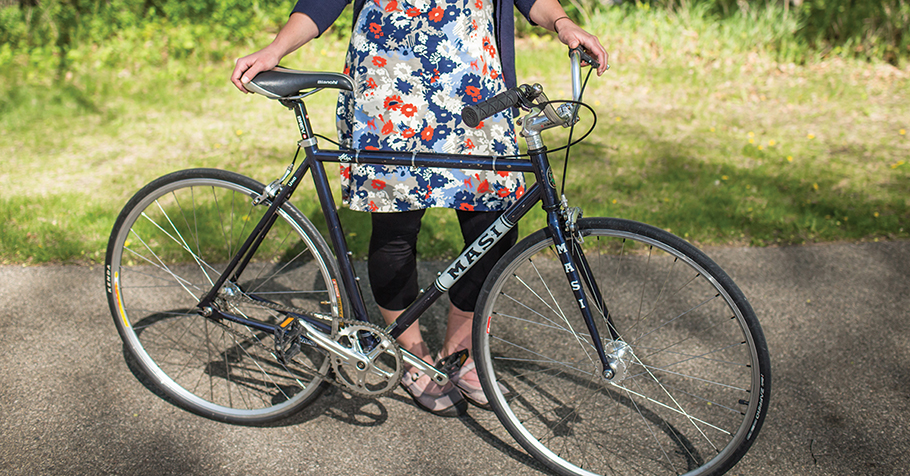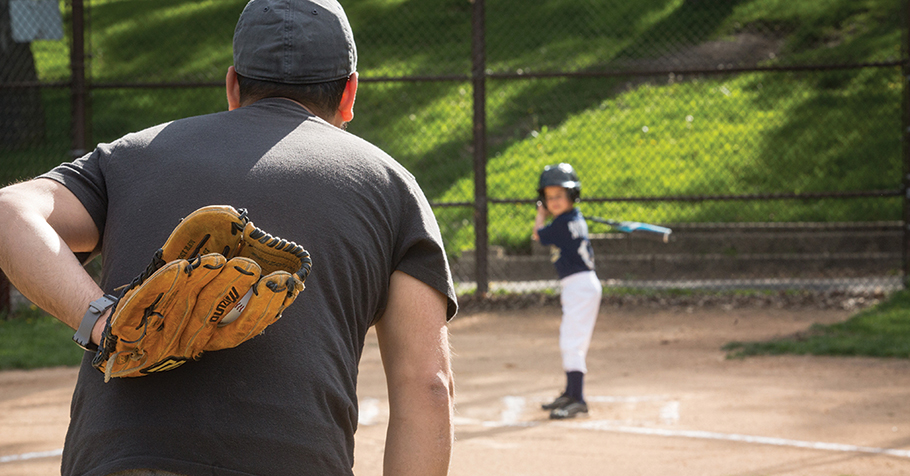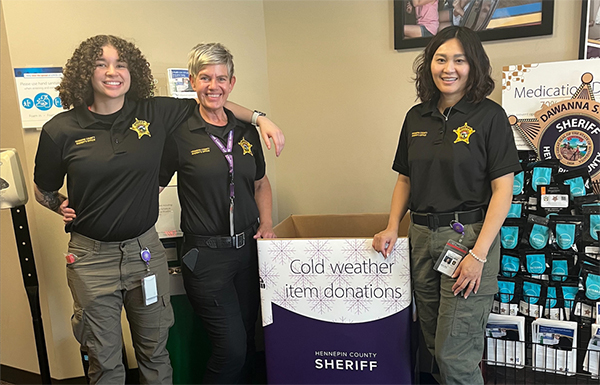When people think about how to reduce waste, oftentimes the first thing they look for is a recycling bin or a donation center. But recycling your plastic and paper and donating unwanted useable goods are only part of the solution.
If we really want to protect the environment and preserve increasingly scarce natural resources, we need to focus also on reducing our demand for new goods in the first place and reusing stuff that’s already been manufactured. Environmental conservation means asking yourself, before making any purchase, do I really need this? And if you do, make the choice to buy used vs. new whenever possible.
Together these actions form a circle of reuse that can decrease waste going into our landfills, it conserves resources needed to manufacture, package, transport and dispose of unneeded new items.

Why you should care about buying used stuff
There are some alarming statistics about how much stuff we actually own. Americans spend over a trillion dollars annually on nonessential goods.1
That’s money out of your pocket. More than that, those purchases come with an environmental impact. The fact is, whatever price you’re paying at the register, the real cost of unnecessary purchases of new items is much higher than what you see on the price tag. Plus, a lot of the time you can find used alternatives to new goods – at a steep discount vs. buying new.
Buying used stuff for environmental conservation
We’ve gotten pretty good at donating unneeded useable items. In fact, two out of three North Americans donate used goods knowing that others will find value in them.2 But too many of us never consider buying used – and that’s a problem. Each year, more than half a trillion gallons of fresh water are used in the dyeing of textiles, and 70 million barrels of oil are used to produce the polyester used in fabrics.3 Those manufacturing costs impact our planet and our pocketbooks.
But here’s some good news: More than half of North Americans say they are more likely to reuse upon learning about the environmental impact of clothing manufacturing.4

Buying used stuff to save money
Anyone who has ever stepped into a consignment store or gone thrifting knows the thrill of getting something you love or need for a lot less money than buying new. And the savings feel even greater when you buy things you only use occasionally, like athletic gear and equipment, specialty appliances, kitchen wares and power tools – things that are simply too spendy for the use they’ll actually get.
There are certain items you’re almost guaranteed to find used and in good shape. Some that come to mind: books, kids gear, picture frames, home décor, seasonal décor, bikes and, of course, clothes. Remember also: Don’t buy something simply because it’s on sale. If you don’t need it, you’re not saving money. You’re just cluttering your life and not promoting environmental conservation. We can all do better, we know it!
Different ways to buy used
When it comes to buying used, you have plenty of options, including consignment, thrift, vintage, pop-up markets and more. Find a way that matches your preferred shopping habits and buy used! You can easily find these types of stores near you by looking at the Choose to Reuse shopping tool.
Consignment
These stores are an excellent place to find high-end goods, from designer apparel (think ball gowns, holiday dresses, scarves and ties) to collectible furniture and home décor. Consignment shops also carry all of the accessories you need to go with your outfit, including jewelry, shoes, purses and other accessories.
Resale
Like consignment shops, resale retailers are ideal resources for higher quality and more specific items for your home, wardrobe, kids, hobbies (like music) and activities (like biking or other sports). You’ll find a wide variety of stores catering a broad array of customers. For help in zeroing in on the store that’s right for you, visit our Choose to Reuse shopping tool.
Thrift
The traditional used shopping experience, thrift shops can have a wide variety of goods for any occasion at a bargain price. You can even pick up decorations and other accessories and all kinds of housewares. If you love the thrill of the hunt for bargains and unique items, these are target-rich environments because they often feature many used goods across product categories and the quality spectrum.
Vintage
Usually offering a more curated experience relative to thrift shops, vintage stores can give you the nostalgia and flair that new stuff just does not have. From mid-century coffee tables to period products from your favorite era, these retailers are loaded with used stuff that needs to be shown off and saved from the landfill.
Online resale stores
These resale retailers are for people who like fashion, function—and search functions. The big players offer the same perks and services of other online retailers: Shopping ease, quality goods and shipping.
Resale sites like thredUP, Poshmark and Swap.com are on trend and have the extra benefit of being easy on your wallet and the environment.
There are also online resale spaces where you can be both the buyer and the seller. A little more comparison shopping and research pays off here, but you can find amazing deals and not waste money on new: eBay, Facebook Market, NextDoor, Craigslist.
Pop-up events
Social media can also keep you in the loop on pop-up events or other ways to access cool used shopping opportunities in your community. Here’s a sampling of Twin Cities sites we’re watching: Do It Green! Minnesota, Minneapolis Vintage Market, Tandem Vintage.
Our top tips to get started buying used stuff
Buying used isn’t so different from buying new, but it helps to approach it with a bit of a process and plan. For example:
- Have a mental (or an actual) list of what you’re looking for. It’s easy to get distracted and find yourself shopping for used stuff you don’t actually need. So, stay focused with a list.
- Be flexible. If you’re looking for, say, a sweater, or a small appliance like a coffee maker, at a retailer of new goods, you’ll find large inventories. Resale retailers won’t typically have that kind of depth. So instead of thinking about a specific item, think of items within the category, and you’re likely to find just what you need.
- Don’t buy stuff just because it’s cheap. Resale retailers typically offer great buys on quality goods, but don’t lose sight of the fact that no matter how low the price is, the product is no bargain if you don’t actually need it.
- Envision the possibilities. Be prepared to be surprised. You never know what’s out there. Moreover, inventories can change by the day.
- Have fun.
Here are some products that can get you started on your journey to buying used.

Popular items to buy used
Clothing
Well-made clothing, particularly when it’s been well-cared for, can last years and years. So, train your sites on high-quality clothing. Try out some strategies for developing a minimalist wardrobe. Focus on enduring style over fast fashion (the trend of stores selling cheaply made clothing that isn’t meant to last much longer than a season). You’ll find a world of possibilities at resale retailers, consignment shops, vintage stores, and specialty online resellers.
Books
Don’t judge a used book by its cover. Page through it. Pick it up, peruse it, smell it, or do whatever else you do to determine if it’s in good condition. Then snap it up at a big discount over the retail price. Locally, there are many opportunities to find used books. For example, Hennepin County Library’s “Friends of the Library” has used book sales periodically. You can also find used books dependably curated at a number of stores in the Twin Cities, including Half Price Books, Magers & Quinn, and Moon Palace Books.
Bikes
A little forethought goes a long way before shopping for a bike. If you haven’t been biking in a while, take a few bikes out for a spin to learn what feels good to you. Know what size you need in a bike. Consider what type of riding you plan to do. It’s important to know your budget, too. But when considering cost, remember also that a bike is an investment, and that you’re more likely to ride a bike that you love and feel comfortable riding. The Twin Cities also has great used bike stores with helpful staff to get you going. Among them are The Hub Bike Co-op and Freewheel Bike.

Music
If you’re going old school and want to touch CDs and spin vinyl records, you’ll need your medium to be scratch free, or the music just won’t play. If you’re shopping online, buy from a reputable person with a lot of good reviews because you’re going to rely on their judgment of whether the music is in good shape or not. You can check vinyl for warping or water damage for yourself when you go crate digging at local record stores like Down in the Valley or Roadrunner Records.
Kids clothing and gear
Kids grow fast, so it makes good sense to buy their stuff used. Head into the nearest Once Upon A Child or Turnstyle Consignment or other kids clothing stores in the Choose to Reuse shopping tool.
When kids try out a new hobby or sport, ask parents of kids already in the sport if they have equipment they’re willing to sell or give away. There are also a number of used local musical instrument and sporting good stores. Again, you can find stores near you on the Choose to Reuse website.

Reduce waste, live better!
We need more people choosing to reuse, repair, refuse, and rent rather than buying new to reduce our environmental impact.
Sources:
1 Whitehouse, Mark, “Number of the week: Americans buy more stuff they don’t need,” Wall Street Journal, April 23, 2011. https://blogs.wsj.com/economics/2011/04/23/number-of-the-week-americans-buy-more-stuff-they-dont-need/
2 “State of reuse report: It’s time to rethink reuse,” Savers, 2016, https://www.savers.com/sites/default/files/reusereport-june7.pdf
3 Sweeny, Glynis. “It’s the Second Dirtiest Thing in the World—And You’re Wearing It,” Alternet, August 13, 2015. 13 Aug. 2015. https://www.alternet.org/2015/08/its-second-dirtiest-thing-world-and-youre-wearing-it/.
4 “State of reuse report: It’s time to rethink reuse,” Savers, 2016, https://www.savers.com/sites/default/files/reusereport-june7.pdf
